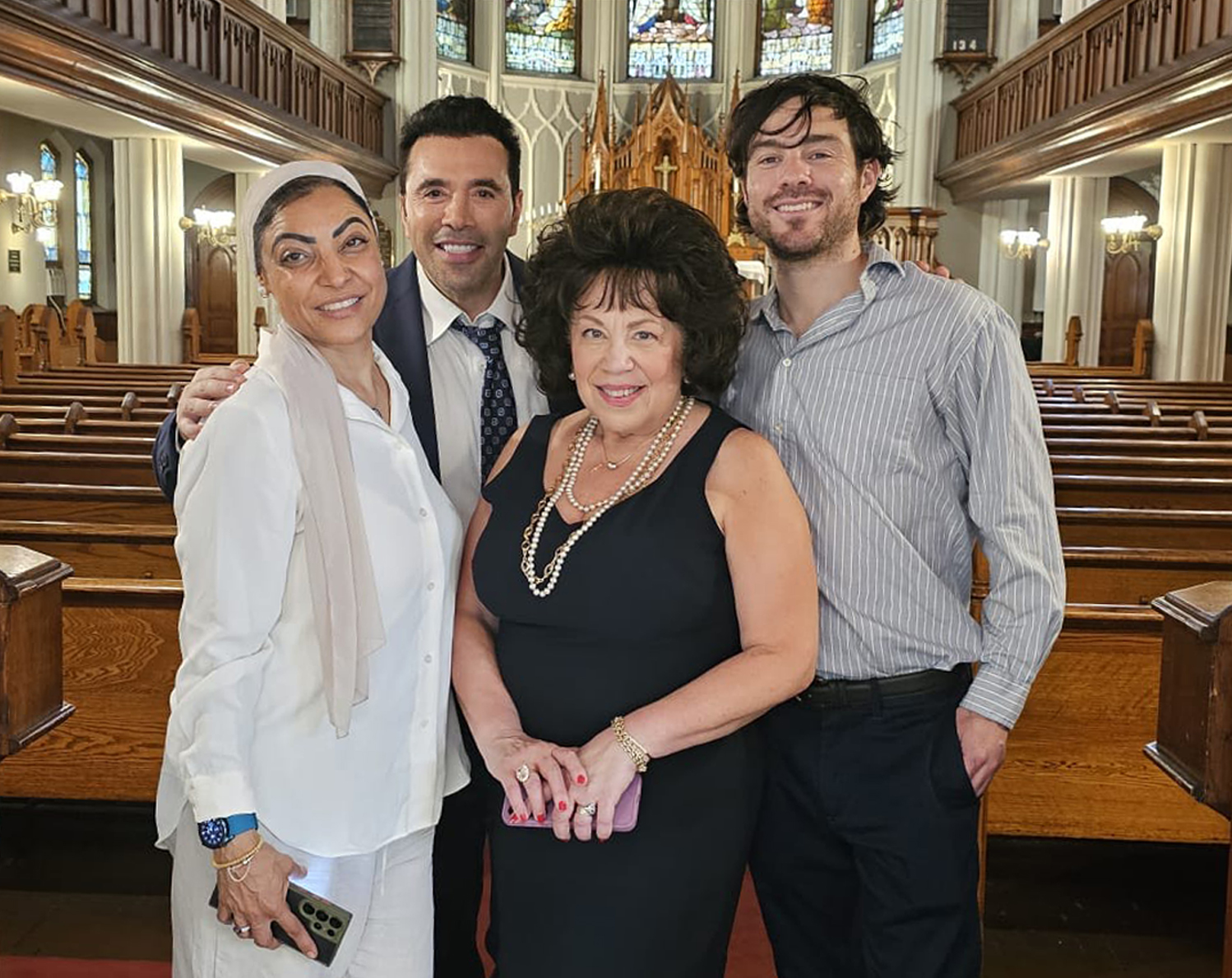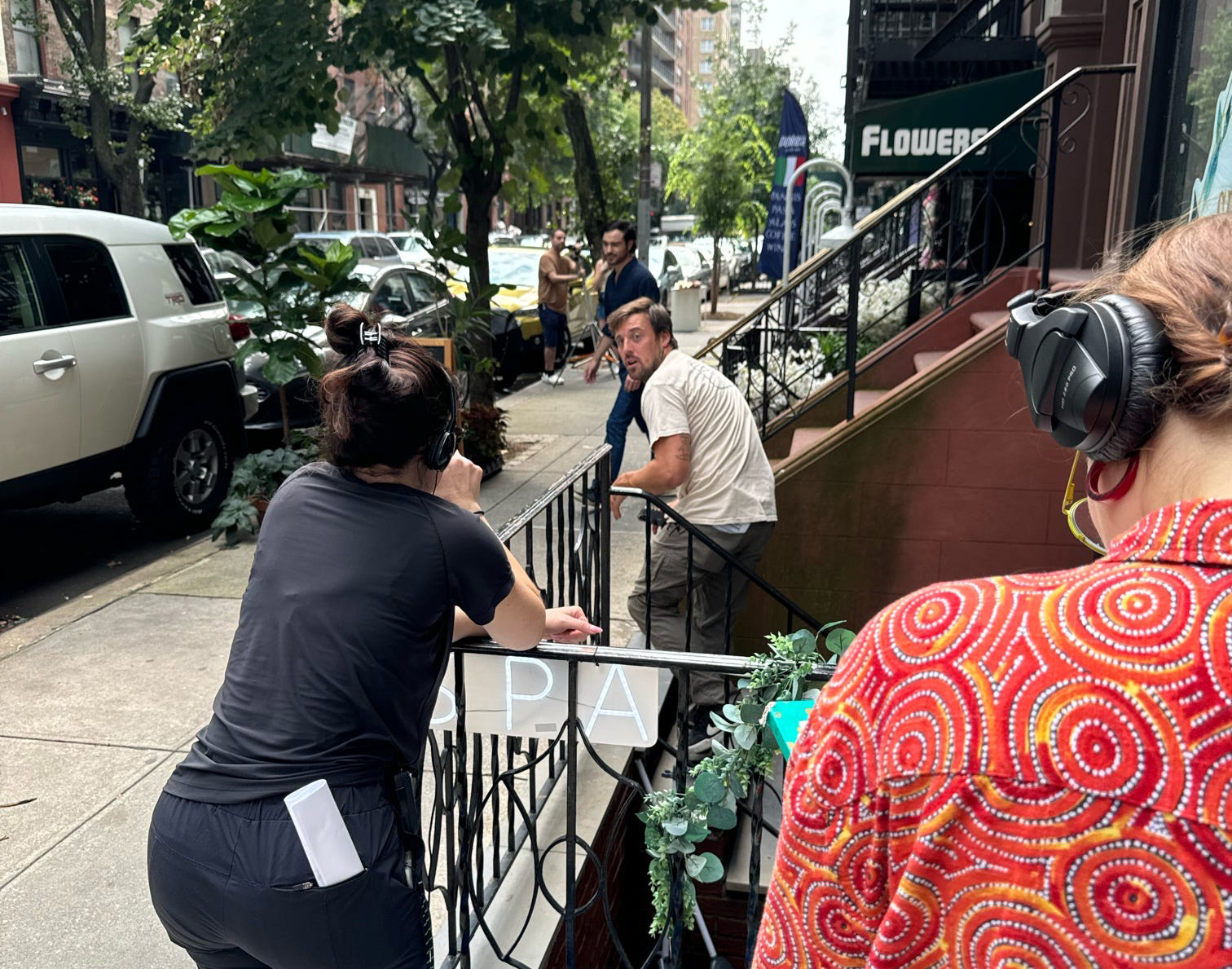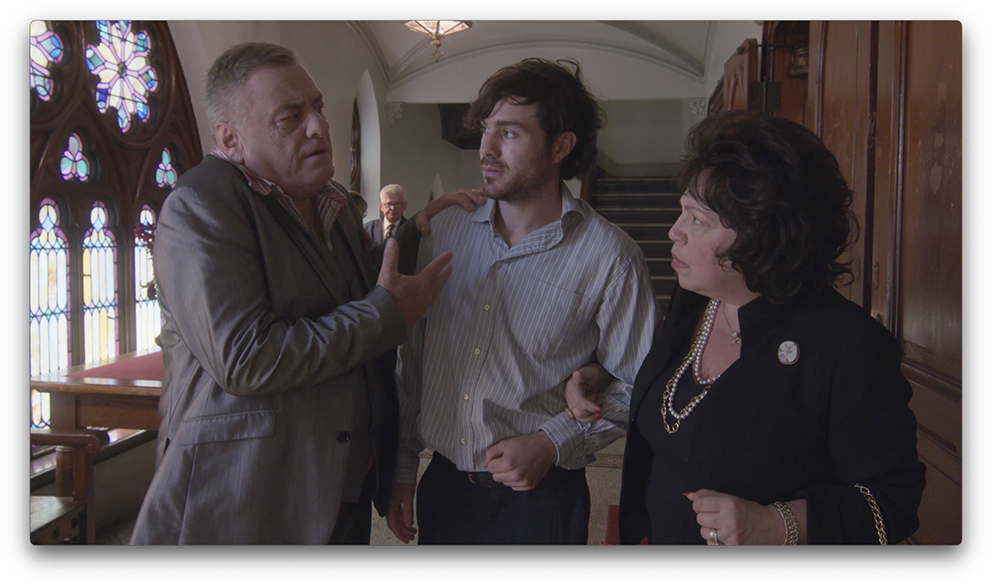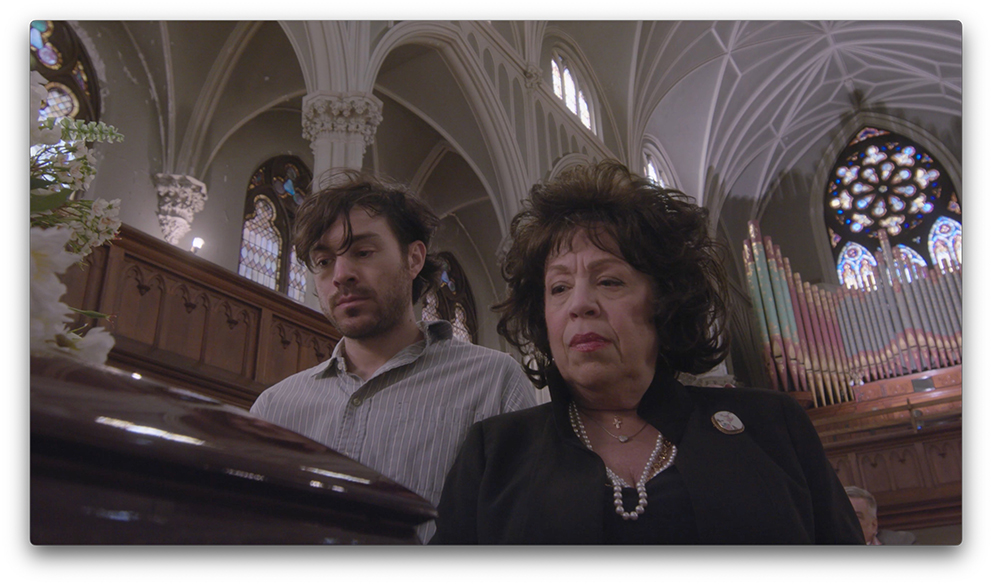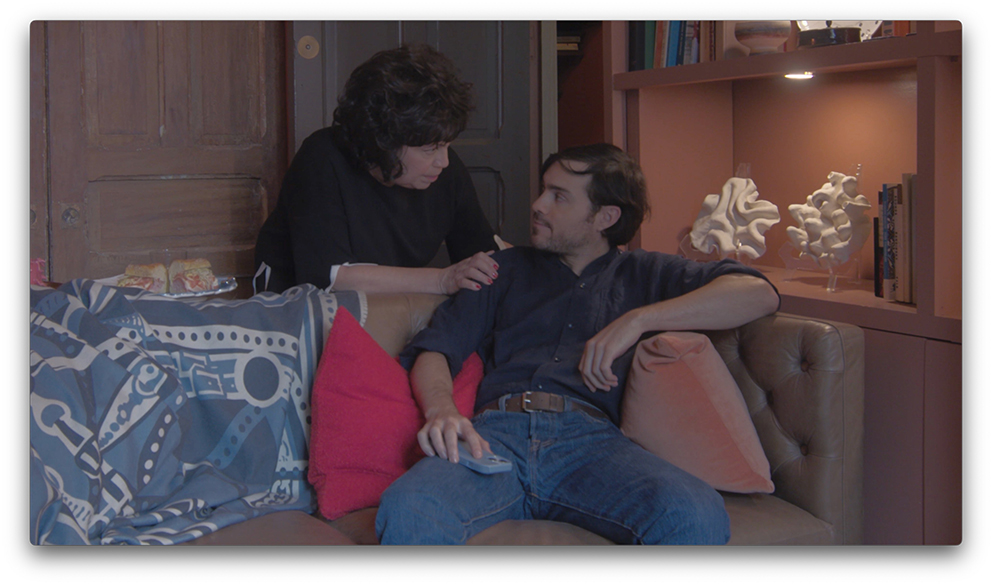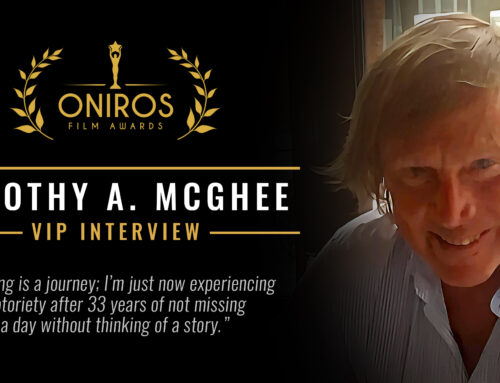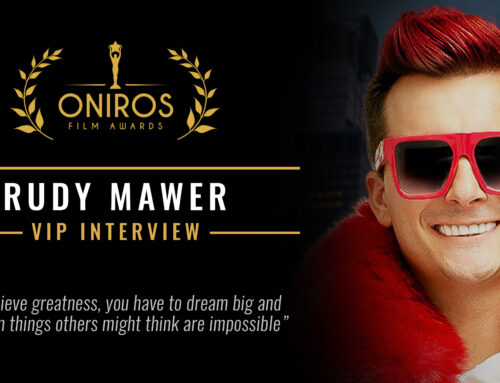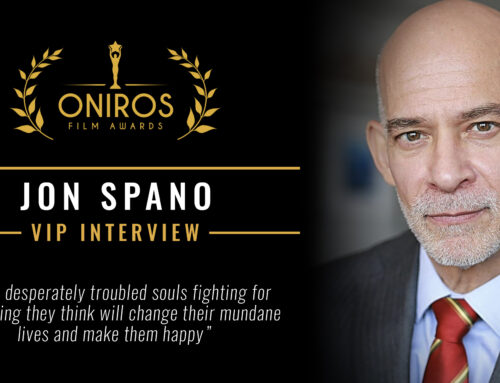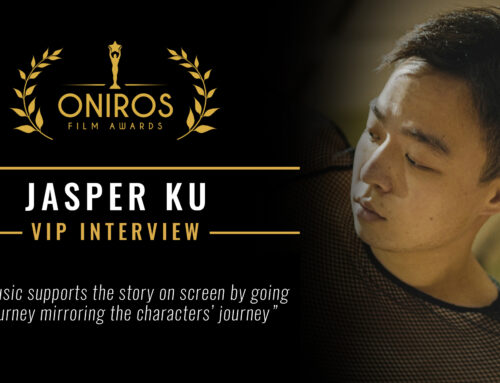BEYOND THE ONIROS FILM AWARDS®
VIP Interview with Finise Avery, writer, producer, and director of the short film ‘Living With Grandma’
by Alice Lussiana Parente
Today, we introduce Finise Avery, the talented New York-based filmmaker and director of the short film Living with Grandma. In this interview, we talk about the team involved in the production, the inspiration behind the film, and how “being a duck” can be the best advice you might receive.
1. When did you realize you wanted to work in the film industry, and how did your career as a filmmaker begin?
I knew early on that I wanted to be part of the film industry. I started as an actor—joining SAG-AFTRA in 2007—and eventually transitioned into Assistant Directing, which gave me an inside look at how sets really operates. I became a member of the DGA in 2022, and over time, realized I wanted to step into storytelling myself. My directorial debut, Living with Grandma, grew out of this desire to tell grounded, emotionally real stories. That first project brought together everything I’d learned on set and opened the door to finding my own voice as a filmmaker.
2. You wrote, produced, and directed the short film Living with Grandma. How was this experience for you? What aspect did you enjoy the most, and which part did you find most challenging during production?
Living with Grandma came together in such a personal and collaborative way. It all started when my childhood friend, Louis Cangiano—who has Tourette’s and was visually impaired at the time—called me with an idea he thought would make a great (and funny) episodic. He was so passionate about it and started sending me voice notes filled with real moments and dialogue from his life with his grandmother. I started shaping those into an outline, and what began as a TV concept evolved into a short film we hoped could lead to something bigger.
Around that same time, my friend Jordan Whitaker—who I’ve known since boarding school and who now teaches at George Mason University—reached out about one of his students, Zach Skiles. Zach was completing his bachelor’s degree in screenwriting and film studies at Columbia’s School of General Studies and looking to get hands-on experience in the film industry. I wanted to support emerging talent, so I connected him with Louis. They clicked right away—Louis would share stories, and Zach helped translate them into vivid, cinematic scenes. At that point, we had strong material and emotional moments, but not yet a full narrative.
That’s when I brought in Luisa Oparanozie to help as a creative consultant and co-writer. She has a great sense of structure, and together we turned all these events into a complete story. I had never written a script before, but I’d read plenty over the years, and Luisa helped shape everything into a proper arc. That’s when the project truly took off—it stopped being a literal retelling and became a fictional story inspired by Louis’s experiences.
As we kept building, I leaned on my production background to figure out how to make it real—and my accounting experience helped guide where to invest and where to save. One of the most emotional scenes takes place in a church, and we scouted several before finding the perfect one. When we saw AA meeting signs and chairs already set up, we knew we were in the right place.
What I enjoyed most was the collaboration—working with people I trust and admire to bring something personal to life. It was a true team effort, and I’m proud of how it all came together.
3. Living with Grandma is your directorial debut. What was the inspiration behind the script? And were there any specific films or filmmakers that inspired you during the development of this project?
The inspiration came from Louis’s real-life stories and a New York Times article on millennials becoming caregivers. That combination of personal experience and broader cultural relevance shaped the film. Directors like Sofia Coppola have always inspired me for their subtle, character-focused work. I also love how shows like Black Mirror explore personal relationships through unique storytelling. I aimed to blend humor and heart while keeping the story grounded in something real.
4. The short film is set in New York City. How challenging was it to find the right locations in such a dynamic city?
Filming in NYC isn’t easy, especially with a small team. But my industry connections helped. We found an incredible townhouse on Peerspace and a stunning church with AA meeting signs already up—it just felt meant to be. Outdoor sound was a challenge, as always, but those authentic NYC visuals brought the story to life. We were small, but we made an impact by choosing locations with real emotional and visual weight.
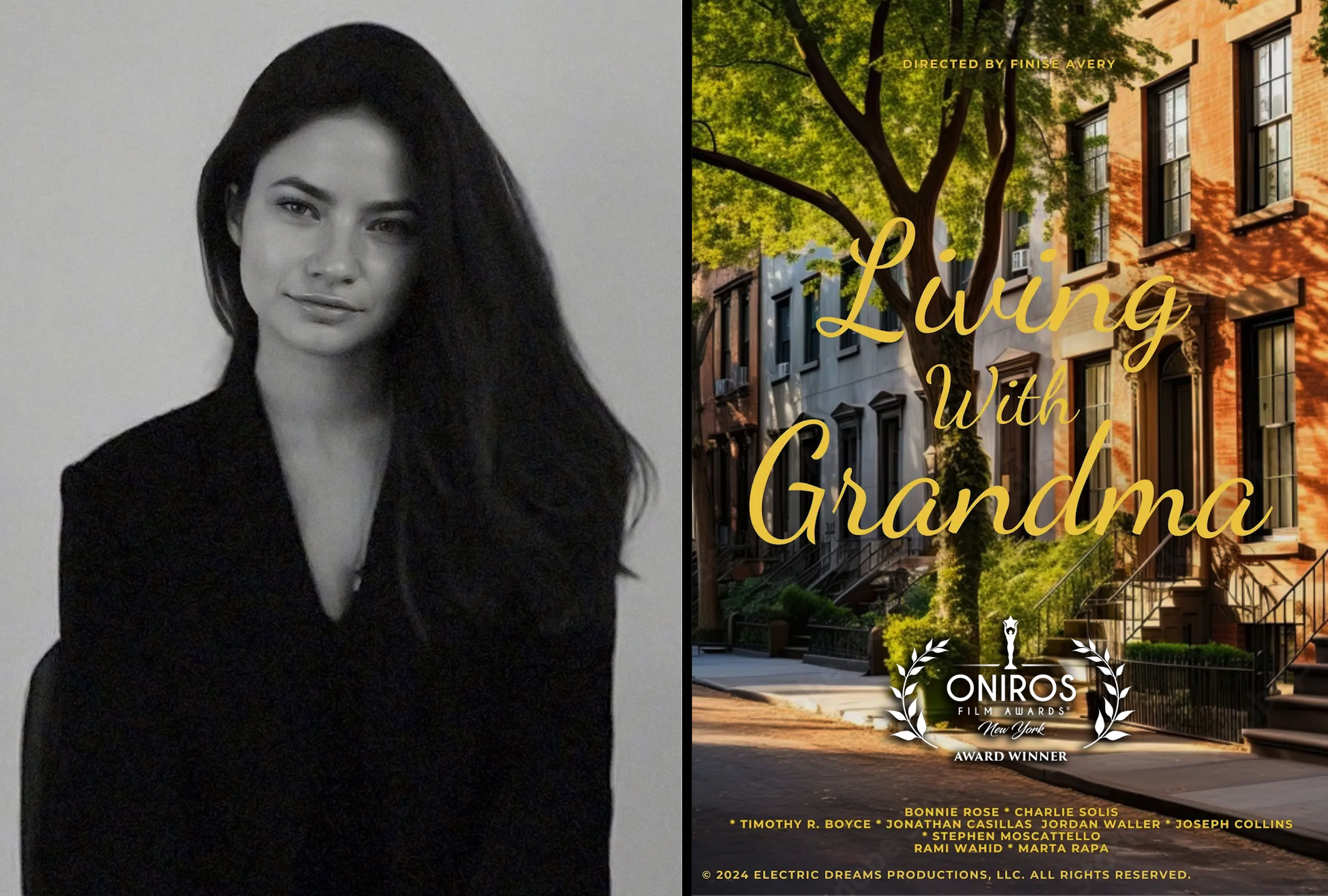
Finise Avery, director of the short film ‘Living With Grandma‘
5. The acting in the film is remarkable: effortless and natural. How did you cast and work with the actors?
The casting process was incredibly organic and personal—many of the actors were people I had worked with in different roles over the years. I’ve been lucky to build strong relationships through my time on set, and this project was a chance to bring together people I trusted and admired.
Bonnie Rose was the very first person I thought of. I worked with her on Fleishman Is in Trouble as the COVID/fittings AD, and from the moment we started outlining this story, I knew she was perfect for the role. I actually reached out to her before we had even written anything—just an idea at that point—and she said yes. She trusted me, and I’m incredibly grateful for that.
Charlie Solis and I knew each other from our time as production assistants. I was aware he was acting, and once Bonnie was on board, I knew Charlie would be a strong match for the role—he had the Italian-American look and energy I envisioned. He really delivered.
Timothy R. Boyce and I worked together on Only Murders in the Building Season 1—he was in the sound department. He’s incredibly charismatic and also brought a lot of authenticity to the project by helping us shape the AA meeting scene. As someone who has been active in that community for years, his input was invaluable.
Jonathan Casillas was a last-minute addition. As we thought about Louis’s character and the theme of gambling addiction, I had the idea that casting a former NFL player could add an interesting layer. I reached out to my friend Bradley McDougald (also a former NFL player), and the next thing I knew, Jonathan was on board. We honestly weren’t sure if he’d make it in time—but he did, and he was a natural.
Jordan Waller and I crossed paths on The Gilded Age Season 2, where I was the 2nd AD for COVID/fittings. He played Oscar Wilde, and we’d coordinated a few times during the show. While writing the script, I kept imagining a witty, British character to give the film a bit of sparkle—and Jordan had the perfect tone. I didn’t think he’d say yes, but he did. He brought such a unique humor and charm.
Joseph Collins was originally cast as background for the priest role. On the day of the shoot, he happened to be standing at the podium while we were rehearsing, and he just started delivering lines. It helped us with blocking and timing—and honestly, that, ladies and gentlemen, was the money shot. He completely owned the role, and we knew right then that he was our priest. It was one of those unexpected moments that made the scene what it needed to be. Stephen Moscatello came through a recommendation from Bonnie. She had worked with him on another project, and after watching his reel, I gave him a call. He was in from the first phone conversation—collaborative and easy to work with.
Rami Wahid made his American film debut with us. A friend of mine on Law & Order had met him and passed along his card. Rami hadn’t done anything in the U.S. yet, but he sent in a tape—and once we saw it, we were sold. He brought such a fresh presence to the role.
And then there’s Marta Rapa—she actually owns the flower shop we shot in. Originally, we planned a simple moment where Louis just looks into his wallet, but on the day, it wasn’t working. So we pulled Marta into hair and makeup, gave her lines, and she nailed it. That spontaneity really reflects the Clint Eastwood quote I love: “You have to steal a lot. You have to have a criminal mentality to be a film director.”
We also embraced improvisation. I think it’s important to cast people you trust and then give them room to bring their instincts to the table. Once we started rehearsing—or even just rolling—they dropped right into character. The chemistry came naturally. Bonnie even wore a darker wig to better match Louis visually, and the costumes and hair really helped bring the characters to life.
In the end, everything just clicked. We really flourished together, and I feel so blessed by the cast we assembled.
6. Can you tell us more about the team involved in the production of Living with Grandma? Have you worked previously with any of the crew members or cast?
Many of us had worked together before, and that familiarity created a strong sense of trust on set. Lisha Johnson, Joe Spinelli, T.R. Boyce, Joe White, and Stephen Fitzgerald were all part of Only Murders in the Building Season 1, and having that shared experience made things flow naturally.
Joe Spinelli, our 1st AD, has worked on projects with Scorsese and Spielberg, so having him on board was a huge asset—we actually used the DGA experimental contract to make it possible. Our costume designer, Donna Maloney, who’s also T.R.’s wife, had previously worked with Joe and brought such a grounded, authentic feel to the wardrobe. She also brought in Chenelle King, another amazing talent.
David Zayas Jr., our DP, and I met while working as stand-ins on Annie, and we’ve stayed friends ever since. He brought in a top-notch camera team, and our Steadicam operator, Trevor Wolfson, helped capture the emotional tone I was going for.
Hair was handled by my longtime stylist, Agnes Bla, who stepped into the film world with incredible enthusiasm and heart.
Everyone involved came through someone I knew, trusted, or had a long-standing relationship with. We were a small group, but we made an impact—and I’m deeply grateful to each person who helped bring this story to life.
7. What did you hope to capture or convey through the bond between Louis and his grandmother? What message did you want to communicate to the audience?
I wanted to show the messy, funny, and deeply loving bond between generations. Their relationship is real—not perfect, but full of care. It’s also a reflection of today’s reality, where younger people are stepping into caregiving roles. Life can change overnight—one day you’re up, the next you’re rebuilding. Staying humble and valuing family is everything. I wanted audiences to walk away feeling seen and reminded not to take the people in their lives for granted.
8. Why was it important to approach addiction with warmth and humor? How did you strike a balance between comedic and emotional moments?
Addiction is a serious and deeply personal subject—but it’s also more common and more complex than we often admit. For Living with Grandma, it was important to approach the theme with honesty, but also with warmth, humor, and humanity. Louis’s real-life experiences included addiction—particularly gambling—and the way he told his stories always had this mix of reflection and resilience, often with a dose of irony. That energy shaped the tone of the film.
I didn’t want to make something heavy-handed or preachy, because addiction doesn’t always present that way. It can show up quietly, in day-to-day life, even with people you’d never expect. Humor wasn’t used to minimize it—it was used to reflect how people really survive it.
And the truth is, gambling addiction—especially online and sports betting—has exploded in recent years. Since the 2018 Supreme Court decision to legalize sports betting, the amount wagered in the U.S. jumped from $4.9 billion in 2017 to $121 billion in 2023, with 94% of those bets placed online. Mobile apps, constant ads, and the normalization of gambling—especially among Gen Z—have made this a real, growing issue. I felt it was important to highlight it in a way that felt real and human.
The emotional balance came from trusting our cast, staying grounded in character, and allowing room for improvisation. Life rarely separates the funny from the painful—they often happen side by side. That’s what we tried to capture.
9. How challenging is it to distribute a self-produced movie nowadays, especially with your background in accounting?
My background as a SAG actor, DGA AD, and now production accountant has given me a full-circle understanding of this industry. I started in acting, moved into AD work, and during the double strikes, pivoted to accounting on Only Murders in the Building. That taught me what really moves budgets—like fringes—and gave me the tools to manage a film from both the creative and financial sides. Self-producing is still hard, but that knowledge gave me the confidence to lead with purpose. We are still working on a destruction deal and are working on learning those steps next. I am open to any advice.
10. What’s the best advice you’ve received, and what advice would you give to a young filmmaker?
The best advice I’ve gotten is: ‘Be a duck—let the water roll off your back.’ This industry is full of highs and lows, and you need to stay calm through it all. For new filmmakers, I’d say: don’t wait for permission. Use what you have. Learn every part of the process—it will make you a stronger storyteller. And build your circle with people you trust. This business is hard, but showing up with heart and resilience matters more than anything.
11. Who in the film industry would you love to work with, and why?
I’ve always admired Sofia Coppola—her ability to create mood, character, and depth through a quiet lens is something I respect deeply. I’ve also tried to reach out to Eif Rivera through a friend of a friend. It didn’t go anywhere, but I respect his visual style and cultural perspective. And I’m fascinated by the directors behind Black Mirror—anyone who can tell such sharp, compact stories with emotional weight has my attention.
12. What’s next for you? What are you currently working on?
Right now, I’m preparing to shoot my next short film, Desperately Seeking Commitment. It’s a comedy about Sophie, a single woman in her late 30s who’s desperate for love and marriage. After a series of hilariously misguided attempts to “facilitate fate” with a man she’s convinced is her soulmate, she ends up in a mediation room facing accusations of stalking. It’s quirky, awkward, and full of heart—rooted in the all-too-relatable desire to be chosen, even if it means completely losing the plot.
This project is a fun step forward from Living with Grandma. While that film explored intergenerational connection and care, this one dives into romantic delusion and self-discovery, still with the emotional honesty and grounded humor I love to write and direct.
Outside of this project, I’m continuing my work with Reel Solidarity and my role on the DGA Focus on Women Committee. I’m passionate about championing underrepresented voices in film and television, and that mission continues to guide the stories I tell and the teams I build. I’m excited to keep developing original narratives that are human, funny, and just a little bit chaotic—in the best way.
